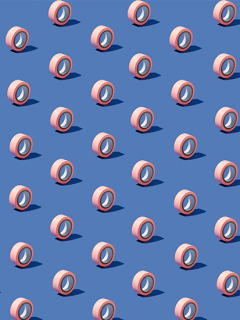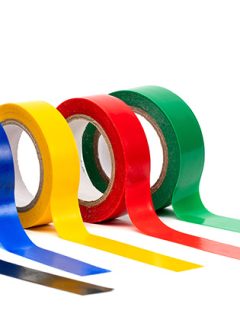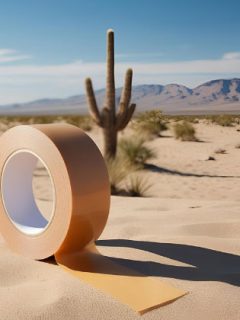Whether for packing, renovating or crafting – adhesive tape is an indispensable tool. But the problem often comes afterwards: Adhesive residue sticks, leaves unsightly residue or damages sensitive surfaces. Removing adhesive residue? Especially on glass, wood, plastic or walls, improper removal can lead to scratches, discolouration or material damage.
But don’t worry: with the right methods and household remedies, adhesive residue can be removed effectively and gently. In this guide, you will learn which techniques are best suited to different materials – and how to avoid residues in the future.
1 – Why removing adhesive residue is important
Basically every adhesive tape leaves adhesive residue. The type of tape or the type of adhesive used and the duration of adhesion influence how stubborn the residue is. Improper removal can lead to these typical problems:
- Dried adhesive residue that cannot simply be wiped off
- Discolouration if adhesive residue reacts with air or sunlight
- Material damage if solvents are too aggressive
- Rough or sticky surfaces that attract dirt
On sensitive surfaces in particular, the wrong approach to removing adhesive residue can lead to irreparable damage – for example, if acetone or alcohol attacks the paintwork on furniture or improper mechanical cleaning causes scratches.
2 – Overview of different types of adhesive tape and their adhesive strength
Not all adhesive tapes are the same – different materials and adhesives have different properties – which can also be an advantage when removing adhesive residue:

| Type of adhesive tape | Properties of the tape | Removal challenges |
|---|---|---|
| Packaging tape (PVC or PP) | Strong adhesion, resistant | Often leaves behind stubborn adhesive residue |
| Fabric tape (duct tape) | Very strong, even on rough surfaces | Adhesive can smear or pull threads |
| Painter’s tape | Easy to remove, suitable for walls | Can bond with the paint over a long adhesion period |
| Double-sided adhesive tape | High adhesive strength, often permanent | Residue is often difficult to remove |
| Insulating tape | Flexible, good for cables & electricity | Adhesive can become greasy after a long time |
| Removable adhesive tape | Designed for easy removal | Usually removable without residue |
The correct method for removing adhesive residue can vary depending on the type of tape. Freshly applied tapes are usually easier to remove, while older adhesive tapes or highly adhesive variants require specific treatment with heat, oil or special cleaning agents.
In this guide, we explain the most effective methods for removing adhesive residue without leaving any residue and without damaging the surface.
Read more about the different types of adhesive used for adhesive tapes:
How does adhesive tape work? The science behind adhesive and adhesive strength
3 – Important factors when removing adhesive residue – what you should know
3.1 Was the surface properly cleaned before gluing?
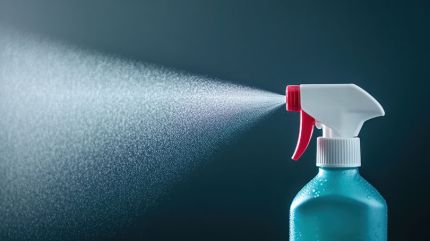 Correct removal begins before the adhesive is applied: Ideally, the surface has been cleaned before applying adhesive tape. This is because dirt, grease or dust can have a negative effect on the adhesion of the adhesive tape, but can also cause it to leave residues.
Correct removal begins before the adhesive is applied: Ideally, the surface has been cleaned before applying adhesive tape. This is because dirt, grease or dust can have a negative effect on the adhesion of the adhesive tape, but can also cause it to leave residues.
A thoroughly cleaned, dry and grease-free surface ensures that the adhesive tape adheres optimally and can be removed without leaving any residue if necessary.
3.2 Adhesive residue on various surfaces – what should I bear in mind?
In order to achieve optimum adhesion while minimising adhesive residue, it is essential to select the right adhesive tape for the surface in question. You can find out which type of adhesive tape is suitable for which surface here:
Adhesive tape on different surfaces – what do you need to look out for?

✔ Glass & mirrors: avoid scratches, ensure streak-free cleaning
✔ Metal & stainless steel: Use gentle cleaners to prevent corrosion
✔ Plastic: Solvents can cause discolouration – prefer mild agents
✔ Wood (varnished & untreated): Moisture can penetrate the material, use solvents sparingly
Walls & wallpaper: Paint or wallpaper can peel off – test carefully
3.3 Age of the adhesive residue
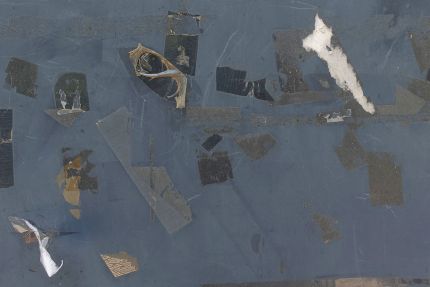
- Fresh adhesive residue can often be easily removed with warm water and soap.
- Dried residues require mechanical or chemical methods.
- Strongly adhesive industrial adhesives often require special solvents or heat treatment.
3.4 Influence of temperature and environmental conditions
- Heat can soften adhesives, making them easier to remove.
- Depending on the type of adhesive,moisture can make removal easier or more difficult.
4 – Methods for removing adhesive residue
4.1 Mechanical methods: Physical removal of adhesive residues
Rubber eraser: abrasion due to friction
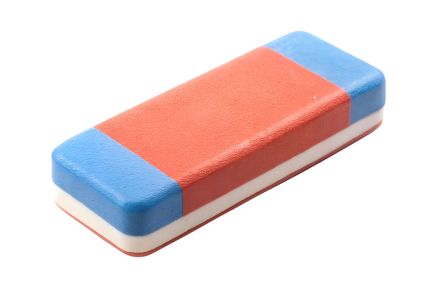
Why does it work?
A rubber eraser uses mechanical friction to break up the adhesive residue into small particles. This is a combination of:
✔ Abrasion (mechanical abrasion): The rubber loosens the adhesive into small pieces.
✔ Adhesion (attraction between molecules): The rubber attracts the dissolved adhesive and absorbs it.
How does it work?
Simply rub over the adhesive residue until it comes off.
Particularly effective on glass, plastic and metal, as these surfaces are hard enough to withstand abrasion. Also perfect for sensitive materials, as no scratches are caused.
Tip: There are special adhesive erasers for car windows or furniture that are even more efficient.
Scraper or squeegee: Mechanical separation of the adhesive molecules
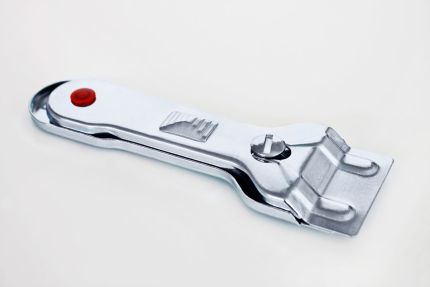
Why does it work?
A scraper or squeegee separates the adhesive residue from the surface by running a thin edge under the adhesive layer and:
✔ Weakening the adhesive forces between the adhesive and the surface.
✔ Lifting the adhesive layer from the substrate without damaging it.
How does it work?
Gently push under the adhesive residue and remove it in small movements.
Ideal for smooth and hard surfaces such as glass, tiles or metal. Use with care on soft materials such as wood! Plastic scrapers are gentler and cause fewer scratches. Metal scrapers, such as those used to clean ceramic hobs, are effective, but should only be used on robust surfaces.
Tip: For very stubborn residues, a slightly damp cloth can help to soften the adhesive a little.
Adhesive tape trick: Remove fresh adhesive residue with adhesive tape
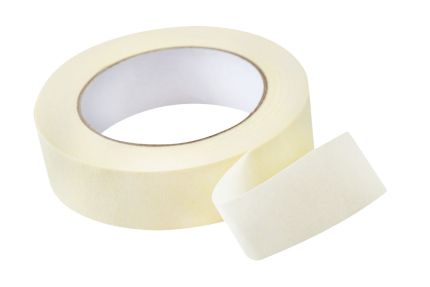
This method works particularly well if there is only a small amount of residue:
- Take a piece of fresh adhesive tape.
- Dab the adhesive side onto the adhesive residue.
- Quickly peel off – the old residue will stick to the new adhesive tape.
Tip: Particularly suitable for smooth surfaces such as glass or plastic and for residues of double-sided adhesive tape.
4.2 Heat treatment: Remove adhesive residue with heat
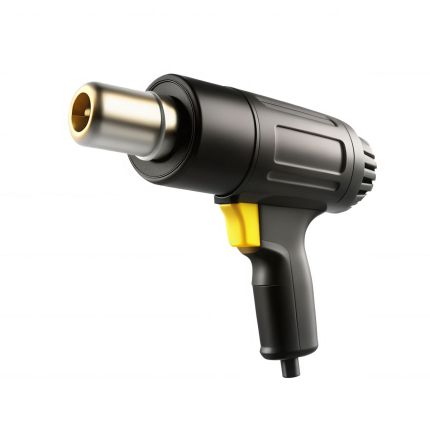
Hairdryer or heat gun – an effective method for many materials. Heat softens the adhesive and makes it easier to remove.
This is how heat treatment works:
- Set the hairdryer or heat gun to a medium setting.
- Hold it approx. 10-15 cm away from the adhesive area.
- Heat the adhesive evenly for 30-60 seconds.
- Then try to remove the adhesive with a scraper or cloth.
When is heat particularly effective?
Suitable for:
✔ Double-sided adhesive tape – comes off more quickly when the adhesive softens.
Duct tape – the strong adhesive force is reduced.
✔ Stickers on glass or metal – can be removed more easily.
⚠ Take care with sensitive materials:
- Plastic can melt or deform if heated too high.
- Painted surfaces could discolour or blister.
- Walls and wallpaper could come loose if the adhesive is deeply absorbed.
Tip: If the adhesive still leaves residue after heat treatment, a mechanical method or a solvent can help.
4.3 Chemical solutions: Effectively remove stubborn adhesive residues
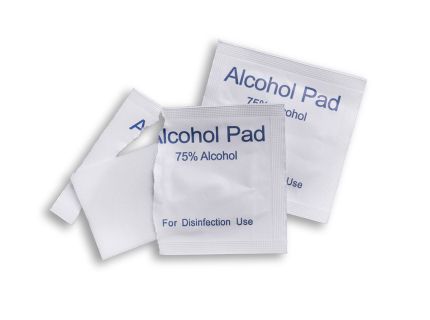
Sometimes mechanical methods or heat are not enough – especially if the adhesive residue is very stubborn. In such cases, chemical agents or household remedies can help to dissolve the adhesive.
✔ Isopropanol (alcohol): Ideal for glass, metal and many plastics
- Dissolves adhesive residues without containing aggressive chemicals.
- Particularly suitable for glass, stainless steel, tiles and some plastics.
- Moisten a lint-free cloth with isopropanol and rub gently over the adhesive residue.
- Find out more: The Fraunhofer Institute for Manufacturing Technology and Advanced Materials (IFAM) researches adhesive technologies and their interaction with solvents.
Tip: Do not use on sensitive surfaces such as varnished wood or leather – discolouration may occur.
Acetone / nail polish remover: Very effective, but not suitable for plastic
- Acetone is one of the strongest solvents, but is not suitable for all materials.
- Particularly effective for super-strong adhesives or label residues on glass and metal.
- Put a little acetone on a cloth and apply carefully.
⚠ Not suitable for plastic! Acetone can attack the material and deform or discolour it.
Tip: If acetone is too aggressive, try alcohol or vinegar instead.
✔ Vinegar or lemon juice: natural alternatives for many materials
- The acid dissolves many adhesives and is particularly environmentally friendly.
- Ideal for glass, tiles, metal and some plastics.
- Simply pour vinegar or lemon juice onto a cloth and leave to act briefly.
Tip: Vinegar is also ideal for windows or car glass as it does not leave any streaks.
✔ Cooking oil or butter: particularly gentle on wood and plastic
- Fats dissolve many adhesives and are a gentle alternative to chemical agents.
- They are ideal for wood, plastic and painted surfaces as they do not attack the material.
- Simply apply a few drops of oil to the adhesive residue, leave to work for 5-10 minutes and then wipe off with a cloth.
Tip: Wipe with a mild detergent after use to remove grease residues.
5 – Special cases: Removing adhesive residue from sensitive surfaces
5.1 Glass & mirrors
✅ Use alcohol or glass cleaner
Do not use sharp tools
5.3 Metal & stainless steel
✅ Special metal cleaners or isopropanol help to dissolve residues
✨ After cleaning, polish with a soft cloth
5.4 Plastic
⚠️ Do not use aggressive solvents such as acetone
✅ Cooking oilor soapy water are the best alternatives
5.5 Wood (varnished & untreated)
Avoid alcohol or acetone – they can damage the varnish
✅Rub gentlywitholive oil or vinegar
5.6 Walls & wallpaper
⚠️ Work slowly and carefully to avoid damaging paint or wallpaper
✅ A hairdryercan help togentlyloosenadhesiveresidue
6 – Which method is best? Always test beforehand!
Regardless of the method, you should always
✅ Test on an inconspicuous area first – to ensure that the material is not damaged.
✅ Try gentle methods first – mechanically or with heat, before using aggressive solvents.
✅ Be patient – some adhesive residues do not come off immediately and need time to soak in.
Which method is the best?
For sensitive surfaces: cooking oil or rubber eraser
For glass & metal: isopropanol or acetone
For plastic & wood: vinegar or lemon juice
For strong adhesives: heat treatment or solvent
These effective methods can be used to remove adhesive residues without damaging surfaces!
Are you looking for high-quality adhesive tapes that are easy to remove? Discover the large selection at RAJA now!











